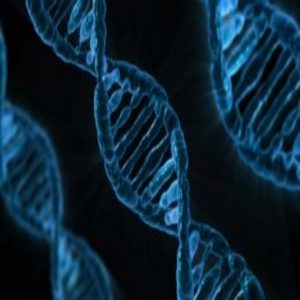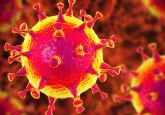A synthetic biology revolution

Today we edit genes, tomorrow we might write them. Read more predictions about the future progress of genome engineering proposed by experts at the Synbiobeta 2017 conference…

The field of synthetic biology has grown exponentially over the past few years, fueled by advancements in CRISPR and other technologies. The rapidly advancing research promises out-of-the-box rewards, such as meatless burgers that bleed, leather spewed from microbes, and algal-inks. Yet, skeptics wonder if these science-fiction like ideas will ever see light of the day. On Oct 4, 2017, in the most anticipated session of the Synbiobeta conference in San Francisco, George Church from Harvard Medical School and Vinod Khosla, an entrepreneur from the Silicon Valley, weighed in on the future of synthetic biology and the practicality of its promised rewards.
Around 1965, at the dawn of the silicon revolution, Gordon Moore, co-founder of Intel, predicted that the number of transistors incorporated in a chip would double every 2 years with a decrease in their cost. Thereafter, Moore’s law became the gold standard for extraordinary growth rate in any field. Now, as Jason Kelly, the founder of Ginkgo Bioworks, rightly pointed out in his keynote speech at the Synbiobeta conference, the pace of progress of synthetic biology is even surpassing Moore’s law.
“The transition from science-fiction to fact is fascinating,” said Church. For example, the cost of sequencing the human genome dropped from an exorbitant $100 M to an affordable $1000 in a span of just 15 years (1). Enticed by the quick rewards from this fast-paced field, several companies have cropped up recently in an effort to efficiently harness academic ideas into application-based products.
Church’s own journey is one such example. In his lab, he focuses on engineering transformative technologies to aid gene therapy. In 2015, his team successfully deleted 62 retroviral genes — remnants from old infections — from the pig genome using CRISPR (2). Encouraged by their success, Church co-founded a company, Egenesis, which plans to enable organ transplants from pigs to humans in the future.
The current bio-revolution was initiated by powerful tools such CRISPR, but the recent crossover of artificial intelligence into biology has fueled it even further, according to Khosla. Artificial intelligence and computational tools are increasingly being used for data learning in biology. “There is an interesting dance between technologies and applications,” agreed Church. For instance, researchers use adeno-associated viruses to deliver cargo for gene therapies, but their delivery efficiencies vary from cell to cell. Now, one can create a large variety of viruses synthetically, and feed their delivery outcomes in different cell types in deep learning algorithms to gain information that would enable optimization of their efficiency.
What will this rapidly advancing technology lead to in the future? As writing genes is now fairly easy, Church predicts that gene writing will gain precedence over gene editing in the near future. He envisions rewriting 1–2 codons in the genetic code of an organism, making it resistant to all viruses— a project currently underway in his lab. Such multivirus resistance would not only make organisms immune to several diseases, but would also benefit industries that currently incur huge losses when viruses infect their microbial cultures in large-scale fermenters.
The current status of synthetic biology promises limitless applications in the long run. In fact, Church advocates building all materials, including computers, using atomically synthesized, naturally scaling, and self-regenerating biological systems in the future. Science fiction? Time will tell.





